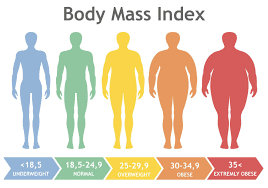Want help to write your Essay or Assignments? Click here
A Social Issue or Governmental Concern
Introduction
Obesity is currently a serious social issue that is increasing rapidly. Whoever considered both woman and children to have different perceptions about their body index, the knowledge in surgical and medical issues that are connected to this disease (Li, et.al.2015). It is important to establish that the US is considerably experiencing a larger growth of obese generation, a factor that needs address.
Thesis:
Obesity is a fast growing epidemic due to several factors such as poor diet, lack of physical activity and stress and has become a serious social issue requiring greater government involvement through nutritional content regulation and increased physical education in schools.
Obesity as a Governmental Concern
It is essential to determine that obesity as a health problem has had a considerable amount of economic impact within the health care system of the United States of America. This can be attributed to the increasing prevalence of overweight individuals that are directly associated with costs for a nations. These costs are incurred by the government in the development of preventive, diagnostic and treatment approaches that are connected to this disease (Li, et.al.2015).
On the other hand, the indirect costs that nations are bound to experience includes the wages that are lost by individuals who do not have the capacity to work since they are diagnosed with this ailment including the value of the future costs that a state is bound to encounter as a result of this ailment, a factor that makes it more of a governments concern as well. Additionally, it is imperative to determine that nations divert resources with the aim of dealing with the challenges that these issues present in a nation thus affecting the economic state of a nation.
Governments are additionally pushed in the acquisition of healthy foods that are more available, with the aim of reducing the supply chain and the promotion of other foods. The government is also obligated to develop awareness programs that encourage the population of healthy feeding in order to mitigate the effects of this disease, encourage physical activity and make the changing of policies easier for individuals who preset such illnesses. In other words, the government is forced to use its potentials in changing the social causatives of obesity
Obesity has been found to affect the health, economy, and social status of different individuals including the economic nation. This can be depicted as individuals who present this illness spend on medication including the government’s efforts aimed at managing this disease. The government in handling this situation is forced to pool several resources aimed at training the healthcare professionals on how to help in managing obesity (Li, et.al.2015).
The health professionals help patients on decreasing their weight stigma and encouraging patients on the need of being sensitive through an approach that involves education. The healthcare professionals are then trained and equipped with appropriate skills in managing this disease. This has seen the development of an obesity management approach that teaches the patients on how to diet and manage the disease. These approaches remain effective in managing obesity in a nation, a factor that requires a joint effort of both the health and government sectors. This determines the fact that obesity remains a health concern in a state.
Want help to write your Essay or Assignments? Click here
Obesity as a Social Issue
Obesity is characterized as a condition that allows the accumulation of excess fats in the body. However, when people accumulate unnecessary weight as a result of this disease, it results into a social factor since it develops several implications within the society, legal, economic, religious and political elements (Li, et.al.2015). In determining the social aspects of obesity in Americans, it is essential to consider that Americans have turned out to be conscious about obesity currently than they did in the past, with many considering it as a societal issue that is viewed to be serious as compared to smoking or drinking.
The rates of Obesity has immensely grown, thus resulting in other nutritional related chronic diseases including the significant burdens that families, healthcare systems and the community encounter in caring for patients with this disease.
It is additionally important to consider the fact that individuals who are obese are viewed differently in the society. The society is more likely to consider them as suffering from unwanted illnesses, a factor that depicts the fact that these individuals are prone to suffer from discrimination and prejudice in different societies (Li, et.al.2015). On the other hand, obese people are considered to also have few friends, lower employment and education opportunities.
Following sources, we considered the perceptions of women especially those who suffer from obesity and their levels of knowledge on the medical and surgical elements as related to this disease as social (Li, et.al.2015). This has seen many of overweight women grow in large numbers, a factor that has caused them to underrate their body mass index (BMI). Since a majority of women that are obese are faced with the challenge of underrating their body mass index.
This can be depicted in the less educated women who we considered whom as having issues that result in the underestimation of their BMI. As depicted in the research, several of these women do not consider knowing their BMI status (Li, et.al.2015).Women are more likely to suffer from obesity without considering to it. It is now essential to call for support systems among the medical fraternity in administering advice to this population.
It is essential to consider that there are some misconceptions that have been developed and that have dominated policy initiatives directed towards combating and managing obesity. Several schools of thought believe that diet restrictions and the element of weight stigmatization may be ineffective in the fight against obesity (Li, et.al.2015).
However, it is important to consider applying psychological science in enacting new regulative approaches that aid in weight management in the local and national level. This essentially discourages individual’s willpower that is in strategies developed to fight obesity and encourage the initiation of policies that support environmental changes that nurture health for the populace.
In managing diabetes, it is vital to consider that there have been misconceptions dominating the policy initiatives in mitigating this disease. This determines the fact that the misconceptions dwelt on diet restrictions and weight stigmatization as not effective in mitigating this disease. In addressing this health concern, there is a need of inclusively incorporating psychological science in helping patients with weight management.
Studies have discovered that there is a need of employing scientific policies in improving the health of patients who suffer from this disease (Li, et.al.2015). This encourages the patients to develop a willpower approach in fighting obesity, whereas there is a need of encouraging policies that support environmental changes in nurturing a healthy society for all. Working conditions require that employees develop a healthy lifestyle that entails eating healthy foods, exercise and inclusion of education.
As determined in this paper, Obesity has turned out to be a health concern since it affects the economic, health, and social lives of individuals in a nation. In a nut shell, obesity is a social concern that has grown rapidly over the years. This a major cause for concern in the long list of issues that obesity can lead to.
Many people do not realize just how damaging obesity can be to their body and their overall health. It is in our hands to put an end to obesity and the extra toll that it is taking on the lives of US citizens conclusively. Let’s change the trend of obesity by making the initiative to live better lifestyles so that we can build towards a healthier America.
Want help to write your Essay or Assignments? Click here
- Conclusion
As determined in this study, Obesity remains a fast growing epidemic due to several factors such as poor diet, lack of physical activity and stress and has become a serious social issue requiring greater government involvement through nutritional content regulation and increased physical education in schools. Obesity has been found to affect the health, economy, and social status of different individuals including the economic nation (Li, et.al.2015).
This can be depicted as individuals who present this illness spend on medication including the government’s efforts aimed at managing this disease. However, it is important to consider applying psychological science in enacting new regulative approaches that aid in weight management in the local and national level.
This essentially discourages individual’s willpower that is in strategies developed to fight obesity and encourage the initiation of policies that support environmental changes that nurture health for the populace. This therefore determines the rationale behind this ailment being a social issue and a governmental concern that is widely affecting several nations both socially, economically, religiously and politically.
References
Li, W., Buszkiewicz, J. H., Leibowitz, R. B., Gapinski, M. A., Nasuti, L. J., & Land, T. G. (2015). Declining Trends and Widening Disparities in Overweight and Obesity Prevalence among Massachusetts Public School Districts, Retrieved from http://www.medscape.com/medline/abstract/26270317
Want help to write your Essay or Assignments? Click here



